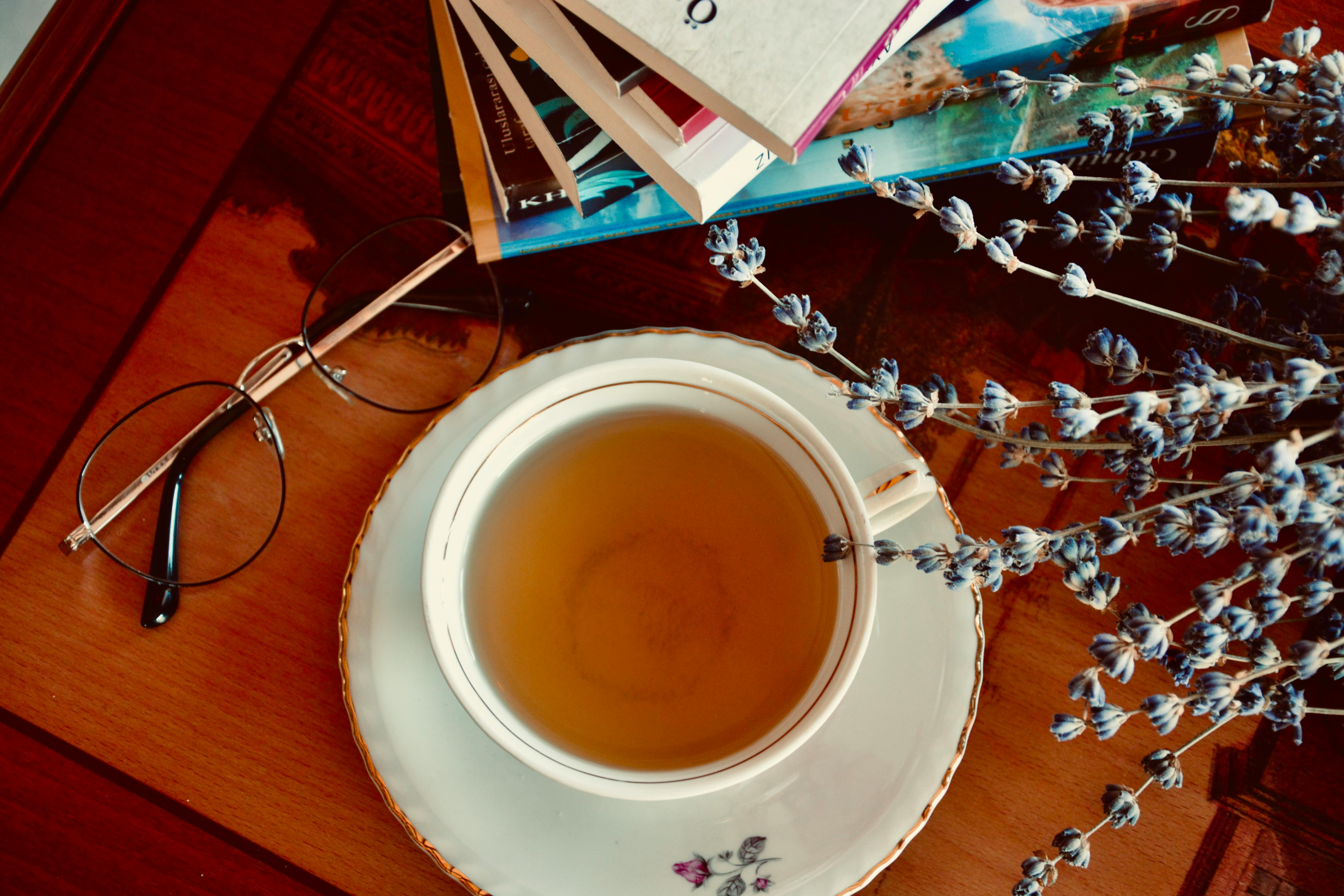Tea is one of the most popular drinks around the world and can be found in almost every culture. But how is tea made? Tea is produced through a complex process that begins with harvesting the leaves from the Camellia sinensis plant and ends with a delicious cup of hot tea. The various steps involved in making tea are outlined below.Tea is a beverage made by steeping dried leaves, buds, or twigs of the tea plant (Camellia sinensis) in hot water. It is one of the most widely consumed beverages in the world, second only to water. There are many varieties of tea available, including black tea, green tea, oolong tea, white tea and herbal teas. Tea can be enjoyed both hot and cold and can be enjoyed plain or with added ingredients such as milk or sugar.
Types of Tea
Tea is one of the most popular beverages in the world and comes in a variety of types. Green tea is a classic favorite, but other varieties such as white, oolong, black, and herbal tea provide a range of tastes and health benefits. Here is an overview of some of the most popular types of tea on the market.
Green Tea
Green tea is made from unoxidized leaves and is one of the less processed types of tea. It has a light color and flavor compared to other teas and contains high levels of antioxidants which can help improve overall health. Studies have shown that green tea can help reduce inflammation, lower cholesterol, and even reduce risk for certain types of cancer.
White Tea
White tea is made from young leaves that have been steamed or pan-fired to preserve their flavor and nutritional value. It has a light, delicate flavor that is slightly sweet with floral notes. White tea also contains high levels of antioxidants which can help boost immunity and protect against disease.
Oolong Tea
Oolong tea is partially oxidized which gives it a darker color than green or white teas but still retains its natural sweetness. The taste can vary depending on how long it has been oxidized but generally has notes of fruit or flowers with a smooth finish. Oolong tea also contains antioxidants that can help protect against free radicals which can cause damage to cells in the body.
Black Tea
Black tea is fully oxidized which gives it its dark color and robust flavor. It has a stronger taste than other teas due to its high caffeine content but also contains antioxidants that can help improve digestion and reduce inflammation in the body. Black tea also contains tannins which may help reduce cholesterol levels in the body when consumed regularly over time.
Herbal Tea
Herbal teas are not actually teas at all since they do not come from Camellia sinensis (the plant from which all true teas are made). Instead, herbal teas are brewed from herbs, spices, fruits, flowers, or other plants that provide unique flavors without any caffeine content at all. Herbal teas have many health benefits including aiding digestion, boosting immunity, reducing stress levels, improving sleep quality, and more!
Where Does Tea Come From?
Tea is one of the most popular beverages in the world, enjoyed by people of all ages and cultures. But where does tea come from? Although tea is grown all around the world, there are two main sources: China and India.
The first tea plant was discovered in China more than 5,000 years ago. Chinese tea leaves are typically harvested several times per year, resulting in a variety of different flavors and types of tea. In addition to green, black, white and oolong teas that are popular in China, there are also herbal teas that have been brewed for centuries.
India is also an important source of tea, with many varieties being grown there. Indian teas are usually divided into two main categories – North Indian or South Indian – depending on where they are grown and processed. North Indian teas tend to be stronger and more robust than South Indian teas, which have a lighter flavor profile.
In recent decades, other countries have begun growing and producing tea as well. Kenya has become a major exporter of black tea, while Sri Lanka (formerly known as Ceylon) produces some of the most sought-after green teas in the world. Japan is home to some of the most highly prized matcha varieties, while Taiwan produces some of the finest oolong teas available anywhere.
No matter where it comes from or what type it is, tea has been enjoyed for thousands of years for its flavor and health benefits – making it one of the world’s most beloved beverages!
How Is Tea Harvested?
Tea harvesting is a labor-intensive process. The tea leaves are carefully picked by hand or machine harvested depending on the type of tea being produced. Hand-picking requires the most skill and experience and yields the highest quality tea leaves. Machine harvesting is more efficient but yields a lower quality crop. Generally, plucking starts with the top two leaves and a bud, then progresses downward on the stem as the season progresses. This process is repeated every few days to ensure only fresh leaves are harvested. After harvesting, the tea leaves are dried, rolled and sorted according to their grade. Depending on the type of tea being processed, further steps such as oxidation or fermentation may be required before packaging.
Tea harvesting is an important part of producing high quality teas, and only experienced workers know how to pick the best quality leaves while maintaining consistency in flavor and aroma. Quality control is also critical in ensuring that each batch of harvested tea meets exacting standards for flavor, color, aroma and other characteristics that make it unique. As with any agricultural product, climate conditions can also affect harvest yields and quality of tea production.
Different Methods of Processing Tea
Tea has been enjoyed by people all around the world for centuries. The way that tea is processed plays a significant role in its flavor and quality. Different methods of processing tea can result in a wide range of flavors.
The most common method used for processing tea is called “orthodox” processing. This involves withering the leaves, rolling them, fermenting them, and then drying them. This process results in a more complex flavor and aroma than other methods.
Another method used to process tea is known as “CTC” processing, which stands for “cut-tear-curl”. This method involves cutting the tea leaves instead of rolling them, resulting in a much more consistent flavor and quicker brewing time than orthodox processing.
The third method used to process tea is called “green tea” processing. During this process, the leaves are heated quickly to stop oxidation and preserve their natural flavor and aroma. As a result, green teas tend to have a lighter flavor than other types of teas.
Finally, there is the “white tea” processing method, which involves lightly steaming the leaves before drying them in order to preserve their natural color and flavor. White teas are known for their delicate flavors and aromas as well as their health benefits.
Each of these methods of processing tea results in different flavors and aromas that can be enjoyed by tea lovers everywhere! Whether you prefer light green teas or full-bodied black teas, there is something for everyone when it comes to different methods of processing tea!

Steps in Making Tea
Making a cup of tea is an enjoyable and simple process. To make a delicious cup of tea, you will need the following items: teabag, boiling water, mug, sugar and milk (optional). First, take your mug and fill it with boiling water. Then, add the teabag and let it steep for 3-5 minutes. After that, remove the teabag from the mug. If desired, add sugar or milk to taste. Finally, your cup of tea is ready to enjoy!
Making tea is a great way to relax and unwind at the end of a long day. Plus, it’s an easy process that can be enjoyed by everyone! There are many different types of tea that you can try to find one that fits your taste. From herbal and fruit blends to traditional black or green tea – there’s something for everyone!
What Is the Difference Between Black and Green Teas?
Black tea and green tea are both made from the same plant, Camellia sinensis. The main difference between them is in how they are processed. Black tea is fully oxidized and green tea is not. During the oxidation process, black tea leaves are left to wither and then exposed to oxygen to allow for the fermentation of the leaf. This changes the chemistry of the leaf and gives it a darker color as well as a stronger flavor.
Green tea, on the other hand, is not allowed to oxidize for as long as black tea. Instead, it is steamed or pan-fired shortly after it is plucked from the plant. This helps preserve its delicate flavor and lighter color. Green tea also contains more antioxidants than black tea due to its lack of oxidation.
Due to their different processing methods, black tea has a stronger flavor than green tea. It has a full-bodied taste that can be enjoyed with or without milk and sugar, while green tea has a more delicate flavor that can easily be overpowered by other ingredients. Black tea also tends to have more caffeine than green tea since it is allowed to oxidize for longer periods of time.
Overall, both types of teas offer health benefits due to their high antioxidant content. They can both help boost your metabolism and improve your overall health if consumed regularly. However, if you’re looking for a stronger flavor or more caffeine, black tea may be your best choice over green tea.
What Are the Health Benefits of Drinking Tea?
Drinking tea is one of the most popular beverages in the world, and it has many health benefits. Tea is a great source of antioxidants, which can help to protect your cells from damage. It has also been linked to a reduced risk of certain types of cancer, as well as a lower risk of heart disease and stroke. Tea also contains caffeine, which can help to improve alertness and concentration, as well as providing a boost of energy.
In addition to the various health benefits associated with tea consumption, it can also be beneficial for weight loss. Studies have shown that drinking tea regularly can help to boost metabolism and increase fat burning. Furthermore, drinking tea can help to reduce appetite, making it easier to stick to a healthy diet.
Tea is also an excellent source of various vitamins and minerals that are essential for good health. For example, green tea contains catechins which are powerful antioxidants that can help protect against cell damage. It is also rich in vitamins A and C, as well as potassium and magnesium. Regular consumption of tea may even help to improve bone density and reduce the risk of osteoporosis.
Overall, drinking tea is an excellent way to get your daily dose of essential nutrients while still enjoying a tasty beverage. Whether you prefer green, black or herbal varieties, there are many health benefits associated with drinking tea on a regular basis.

Conclusion
Tea is a complex process that requires careful cultivation and harvesting of the tea leaves, careful processing of the leaves, and expert blending. The various steps involved in making tea depend on what type of tea is being made. Processes can include withering, rolling, oxidation, pan-firing, steaming and drying. The precise methods used are often closely guarded secrets by individual tea producers and processors. Regardless of the type of tea being made, it all starts with fresh, high-quality tea leaves that have been processed correctly to bring out the best flavor. With this understanding of how tea is made, you will be able to appreciate the skill and craftsmanship that goes into each cup!
